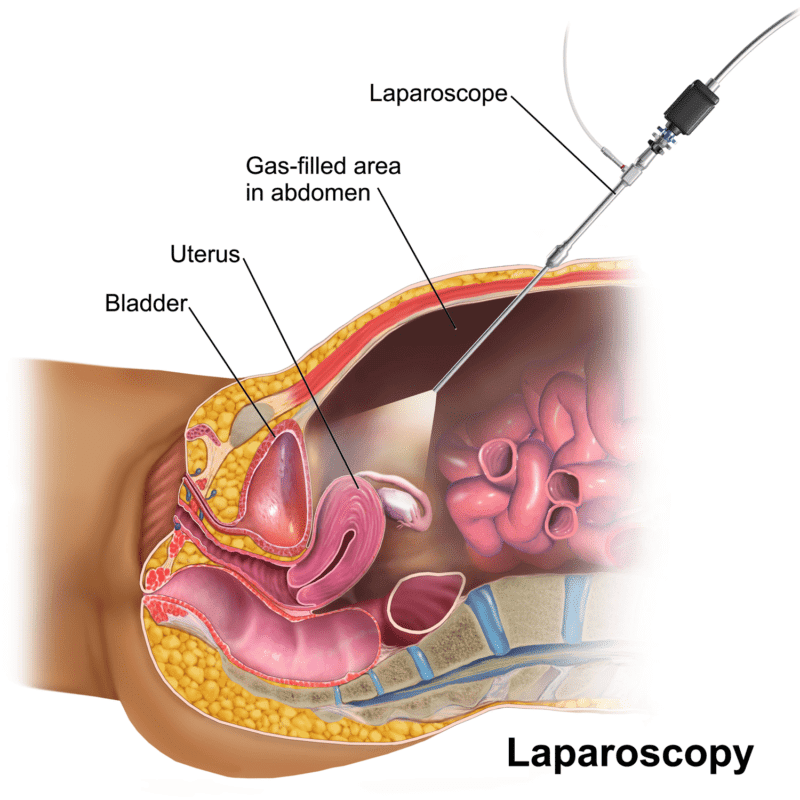What is a laparoscopy?
A laparoscopy (keyhole) is a minimally invasive surgery performed under general anaesthesia with a 1cm cut in the umbilicus and three to four 0.5cm cuts in the abdomen. The abdomen is inflated with carbon dioxide gas, and a laparoscope (camera) is inserted through the umbilicus with other instruments inserted through the smaller cuts, so as to perform the surgery.
Laparoscopic surgery is frequently performed for gynaecological conditions including:
- Uterine fibroids
- Ovarian cysts
- Adenomyosis
- Hydrosalpinx
- Endometriosis
- Infertility
- Uterine and ovarian cancers
Laparoscopy is generally a safe and commonly done procedure. Overall risk of complications is low but can be higher in certain conditions e.g. endometriosis, obesity, previous abdominal surgeries, previous infections, cancers – you should discuss these with your gynaecologist.
Risks of laparoscopy include:
Common (affecting 1-5% of patients):
- Subcutaneous emphysema (trapping of gas underneath the skin)
- Shoulder tip pain
- Wound bruising/ infection
- Port site metastasis following cancer surgery (Cancer cells in the wound area)
- Conversion to open surgery
Uncommon (affecting 0.1-1% of patients):
- Hernia at the site of entry
- Abdominal wall vascular injury
- Absence of pathology / Negative laparoscopy
- Major haemorrhage (Major bleeding)
- Damage to bowel, bladder, ureter or uterus which would require immediate repair by laparoscopy or laparotomy (uncommon). However, up to 15% of injuries might not be diagnosed at the time of laparoscopy and require further procedures later on
- Deep venous thrombosis (blood clot in the leg) or pulmonary embolism (blood clot in the lung)
- Anaesthetic complications
Rare (affecting <0.1% of patients)
- Failure to gain entry into the abdomen
- Major vessel injury
- Brachial plexus neuropathy (nerve injury to the arm)
- Pulmonary / Gas embolism (Gas bubble formation in lung vessels)
- Pneumothorax / Pneumo-mediastinum (air in the spaces around the lungs)
- Serious adverse reactions to general anaesthesia, including cardiorespiratory complications
Death: the risk is approximately less than 3-8 in 100,000.
Photo credit: BruceBlaus / Wikimedia Commons
